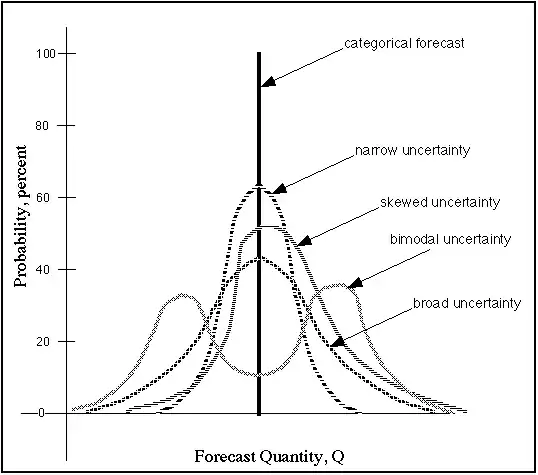I found this a very interesting question and I struggled to think of scenarios where binning a response variable would lead to better predictions.
The best I could come up with is a scenario like this one (all code is attached at the end), where the red class corresponds to $y \leq 1$ and the blue class to $y>1$ and we have one (or of course more) predictor that is within class uncorrelated with $y$, but separates the classes perfectly.

Here, a Firth penalized logistic regression
Predicted
Truth red blue
red 5000 0
blue 2 4998
beats a simple linear model (followed by classifying based on whether predictions are >1):
Predicted
Truth red blue
red 4970 30
blue 0 5000
However, let's be honest, part of the problem is that a linear regression is not such a great model for this problem. Replacing the linear regression and the logistic regression with a regression and a classification random forest, respectively, deals with this perfectly. Both produce this result (see below):
Predicted
Truth red blue
red 5000 0
blue 0 5000
However, I guess that's at least an example where you seem to do a little better within the class of models with a linear regression equation (of course, this still totally ignores the possibility of using splines etc.).
library(tidyverse)
library(ranger)
library(ggrepel)
library(logistf)
# Set defaults for ggplot2 ----
theme_set( theme_bw(base_size=18) +
theme(legend.position = "none"))
scale_colour_discrete <- function(...) {
# Alternative: ggsci::scale_color_nejm(...)
scale_colour_brewer(..., palette="Set1")
}
scale_fill_discrete <- function(...) {
# Alternative: ggsci::scale_fill_nejm(...)
scale_fill_brewer(..., palette="Set1")
}
scale_colour_continuous <- function(...) {
scale_colour_viridis_c(..., option="turbo")
}
update_geom_defaults("point", list(size=2))
update_geom_defaults("line", list(size=1.5))
# To allow adding label to points e.g. as geom_text_repel(data=. %>% filter(1:n()==n()))
update_geom_defaults("text_repel", list(label.size = NA, fill = rgb(0,0,0,0),
segment.color = "transparent", size=6))
# Start program ----
set.seed(1234)
records = 5000
# Create the example data including a train-test split
example = tibble(y = c(runif(n=records*2, min = 0, max=1),
runif(n=records*2, min = 1, max=2)),
class = rep(c(0L,1L), each=records*2),
test = factor(rep(c(0,1,0,1), each=records),
levels=0:1, labels=c("Train", "Test")),
predictor = c(runif(n=records*2, min = 0, max=1),
runif(n=records*2, min = 1, max=2)))
# Plot the dataset
example %>%
ggplot(aes(x=predictor, y=y, col=factor(class))) +
geom_point(alpha=0.3) +
facet_wrap(~test)
# Linear regression
lm1 = lm(data=example %>% filter(test=="Train"),
y ~ predictor)
# Performance of linear regression prediction followed by classifying by prediction>1
table(example %>% filter(test=="Test") %>% pull(class),
predict(lm1,
example %>% filter(test=="Test")) > 1)
# Firth penalized logistic regression
glm1 = logistf(data=example %>% filter(test=="Train"),
class ~ predictor,
pl=F)
# Performance of classifying by predicted log-odds from Firth LR being >0
table(example %>% filter(test=="Test") %>% pull(class),
predict(glm1,
example %>% filter(test=="Test"))>0)
# Now, let's try this with RF instead:
# First, binary classification RF
rf1 = ranger(formula = class ~ predictor,
data=example %>% filter(test=="Train"),
classification = T)
table(example %>% filter(test=="Test") %>% pull(class),
predict(rf1, example %>% filter(test=="Test"))$predictions)
# Now regression RF
rf2 = ranger(formula = y ~ predictor,
data=example %>% filter(test=="Train"),
classification = F)
table(example %>% filter(test=="Test") %>% pull(class),
predict(rf2, example %>% filter(test=="Test"))$predictions>1)
